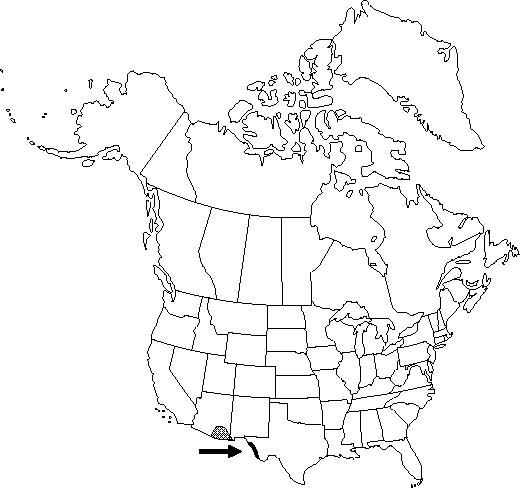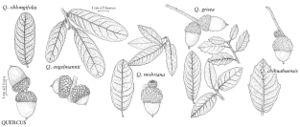Difference between revisions of "Quercus oblongifolia"
in L. Sitgreaves, Rep. Exped. Zuni Colorado Rivers, 173, plate 19. 1853.
FNA>Volume Importer |
FNA>Volume Importer |
(No difference)
| |
Revision as of 19:55, 24 September 2019
Trees, evergreen, to 10 m. Bark gray or whitish, closely furrowed. Twigs light brown, 1-1.5 mm diam., densely or sparsely stellate-tomentose, soon glabrate. Buds reddish brown, subspheric to broadly ovoid, 1-2 mm, glabrous or basal scales pubescent; stipules persistent about terminal buds. Leaves: petiole 2-5(-8) mm. Leaf blade oblong to elliptic, occasionally lanceolate or ovate, (20-)30-60(-80) × (5-)10-25(-30) mm, base cuneate to cordate, margins entire, undulate, sometimes irregularly toothed especially toward apex, secondary veins 7-8(-10) on each side, branched, apex acute or broadly rounded; surfaces abaxially densely and loosely glandular-tomentose, quickly glabrate or persistently floccose, especially about base of midrib, at maturity strongly glaucous, adaxially dull pale green, bluish green, or glaucous, sparsely stellate-tomentose, quickly glabrate. Acorns solitary or paired, subsessile or on peduncle 4-12 mm; cup cup-shaped, about 6-8(-13) mm deep × 10-13 mm wide, enclosing ca. 1/3 nut, scales to 1-1.5 mm wide, moderately, regularly tuberculate near base of cup, gray-pubescent; nut light brown, ovoid or oblong, 12-17(-19) × (7-)10-12 mm, glabrate or puberulent about apex. Cotyledons connate.
Phenology: Flowering in spring.
Habitat: Common in high grasslands and midelevation woodlands, mesas, and canyons
Elevation: 1300-1650 m
Distribution

Ariz., N.Mex., Tex., Mexico (Baja California South, Sonora, Chihuahua, and Coahuila).
Discussion
Selected References
None.
